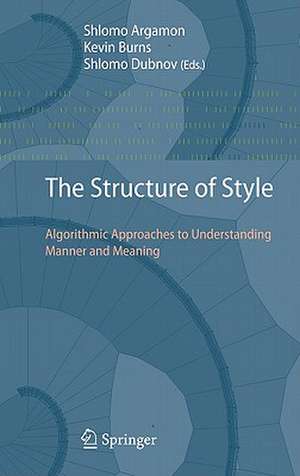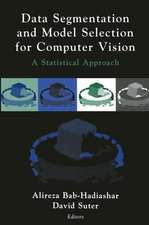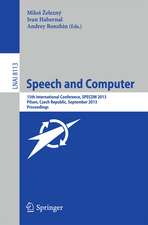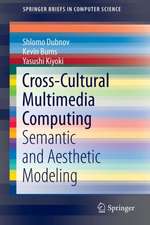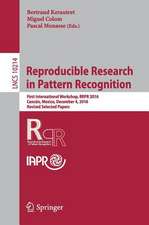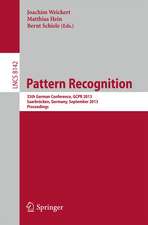The Structure of Style: Algorithmic Approaches to Understanding Manner and Meaning
Editat de Shlomo Argamon, Kevin Burns, Shlomo Dubnoven Limba Engleză Hardback – 15 sep 2010
The Structure of Style explores this issue from a computational viewpoint, in terms of how information is represented, organized, and transformed in the production and perception of different styles. New computational techniques are now making it possible to model the role of style in the creation of and response to human artifacts—and therefore to develop software systems that directly make use of style in useful ways.
Argamon, Burns, and Dubnov organize the research they have collected in this book according to the three roles that computation can play in stylistics. The first section of the book, Production, provides conceptual foundations by describing computer systems that create artifacts—musical pieces, texts, artworks—in different styles. The second section, Perception, explains methods for analyzing different styles and gleaning useful information, viewing style as a form of communication. The final section, Interaction, deals with reciprocal interaction between style producers and perceivers, in areas such as interactive media, improvised musical accompaniment, and game playing.
The Structure of Style is written for researchers and practitioners in areas including information retrieval, computer art and music, digital humanities, computational linguistics, and artificial intelligence, who can all benefit from this comprehensive overview and in-depth description of current research in this activeinterdisciplinary field.
| Toate formatele și edițiile | Preț | Express |
|---|---|---|
| Paperback (1) | 648.44 lei 6-8 săpt. | |
| Springer Berlin, Heidelberg – 13 noi 2014 | 648.44 lei 6-8 săpt. | |
| Hardback (1) | 654.87 lei 6-8 săpt. | |
| Springer Berlin, Heidelberg – 15 sep 2010 | 654.87 lei 6-8 săpt. |
Preț: 654.87 lei
Preț vechi: 818.59 lei
-20% Nou
Puncte Express: 982
Preț estimativ în valută:
125.31€ • 133.100$ • 104.48£
125.31€ • 133.100$ • 104.48£
Carte tipărită la comandă
Livrare economică 18 aprilie-02 mai
Preluare comenzi: 021 569.72.76
Specificații
ISBN-13: 9783642123368
ISBN-10: 3642123368
Pagini: 356
Ilustrații: XVIII, 338 p.
Dimensiuni: 155 x 235 x 27 mm
Greutate: 0.68 kg
Ediția:2010
Editura: Springer Berlin, Heidelberg
Colecția Springer
Locul publicării:Berlin, Heidelberg, Germany
ISBN-10: 3642123368
Pagini: 356
Ilustrații: XVIII, 338 p.
Dimensiuni: 155 x 235 x 27 mm
Greutate: 0.68 kg
Ediția:2010
Editura: Springer Berlin, Heidelberg
Colecția Springer
Locul publicării:Berlin, Heidelberg, Germany
Public țintă
ResearchCuprins
Production.- Style as Emergence (from What?).- Whose Style Is It?.- Style in Music.- Generating Texts in Different Styles.- Perception.- The Rest of the Story: Finding Meaning in Stylistic Variation.- Textual Stylistic Variation: Choices, Genres and Individuals.- Information Dynamics and Aspects of Musical Perception.- Let’s Look at Style: Visual and Spatial Representation and Reasoning in Design.- Interaction.- Troiage Aesthetics.- Interaction with Machine Improvisation.- Strategic Style in Pared-Down Poker.- Style: A Computational and Conceptual Blending-Based Approach.- The Future of Style.
Notă biografică
Shlomo Argamon is Associate Professor of Computer Science at the Illinois Institute of Technology, Chicago, IL, USA, since 2002. Prior to that, he had held academic positions at Bar-Ilan University, where he held a Fulbright Postdoctoral Fellowship (1994-96), and at the Jerusalem College of Technology. Dr. Argamon received his B.S. (1988) in Applied Mathematics from Carnegie-Mellon University, and his M.Phil. (1991) and Ph.D. (1994) in Computer Science from Yale University, where he was a Hertz Foundation Fellow. His current research interests lie mainly in the use of machine learning methods to aid in functional analysis of natural language, with particular focus on questions of style. During his career, Dr. Argamon has worked on a variety of problems in experimental machine learning, including robotic map-learning, theory revision, and natural language processing, and has published numerous research papers in these areas.
Kevin Burns is a Principal Scientist at the MITRE Corporation. His interest is in computational modeling of cognitive processing, including strategic decisions and visual perception, to improve the design of decision support systems. Kevin holds engineering degrees from the Massachusetts Institute of Technology where he also studied cognitive science and media arts.
Shlomo Dubnov is an Associate Professor in music technology at UCSD. Prior to this he served as invited researcher at the Institute for Research and Coordination of Acoustics and Music (IRCAM) in Paris and was a senior lecturer in the department of communication systems engineering at Ben-Gurion-University in Israel. He holds a PhD in Computer Science from Hebrew University in Jerusalem. His research topics include music improvisation systems, machine learning of musical style, computational aesthetics and questions of human perception and experience of fun.
Kevin Burns is a Principal Scientist at the MITRE Corporation. His interest is in computational modeling of cognitive processing, including strategic decisions and visual perception, to improve the design of decision support systems. Kevin holds engineering degrees from the Massachusetts Institute of Technology where he also studied cognitive science and media arts.
Shlomo Dubnov is an Associate Professor in music technology at UCSD. Prior to this he served as invited researcher at the Institute for Research and Coordination of Acoustics and Music (IRCAM) in Paris and was a senior lecturer in the department of communication systems engineering at Ben-Gurion-University in Israel. He holds a PhD in Computer Science from Hebrew University in Jerusalem. His research topics include music improvisation systems, machine learning of musical style, computational aesthetics and questions of human perception and experience of fun.
Textul de pe ultima copertă
Style is a fundamental and ubiquitous aspect of the human experience: Everyone instantly and constantly assesses people and things according to their individual styles, academics establish careers by researching musical, artistic, or architectural styles, and entire industries maintain themselves by continuously creating and marketing new styles. Yet what exactly style is and how it works are elusive: We certainly know it when we see it, but there is no shared and clear understanding of the diverse phenomena that we call style.
The Structure of Style explores this issue from a computational viewpoint, in terms of how information is represented, organized, and transformed in the production and perception of different styles. New computational techniques are now making it possible to model the role of style in the creation of and response to human artifacts—and therefore to develop software systems that directly make use of style in useful ways.
Argamon, Burns, and Dubnov organize the research they have collected in this book according to the three roles that computation can play in stylistics. The first section of the book, Production, provides conceptual foundations by describing computer systems that create artifacts—musical pieces, texts, artworks—in different styles. The second section, Perception, explains methods for analyzing different styles and gleaning useful information, viewing style as a form of communication. The final section, Interaction, deals with reciprocal interaction between style producers and perceivers, in areas such as interactive media, improvised musical accompaniment, and game playing.
The Structure of Style is written for researchers and practitioners in areas including information retrieval, computer art and music, digital humanities, computational linguistics, and artificial intelligence, who can all benefit from this comprehensive overview and in-depth description of current research in this activeinterdisciplinary field.
The Structure of Style explores this issue from a computational viewpoint, in terms of how information is represented, organized, and transformed in the production and perception of different styles. New computational techniques are now making it possible to model the role of style in the creation of and response to human artifacts—and therefore to develop software systems that directly make use of style in useful ways.
Argamon, Burns, and Dubnov organize the research they have collected in this book according to the three roles that computation can play in stylistics. The first section of the book, Production, provides conceptual foundations by describing computer systems that create artifacts—musical pieces, texts, artworks—in different styles. The second section, Perception, explains methods for analyzing different styles and gleaning useful information, viewing style as a form of communication. The final section, Interaction, deals with reciprocal interaction between style producers and perceivers, in areas such as interactive media, improvised musical accompaniment, and game playing.
The Structure of Style is written for researchers and practitioners in areas including information retrieval, computer art and music, digital humanities, computational linguistics, and artificial intelligence, who can all benefit from this comprehensive overview and in-depth description of current research in this activeinterdisciplinary field.
Caracteristici
State-of-the-art overview of a highly interdisciplinary field Combines computational and social aspects Encompasses examples from art, music and literature Includes supplementary material: sn.pub/extras
